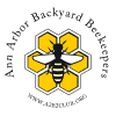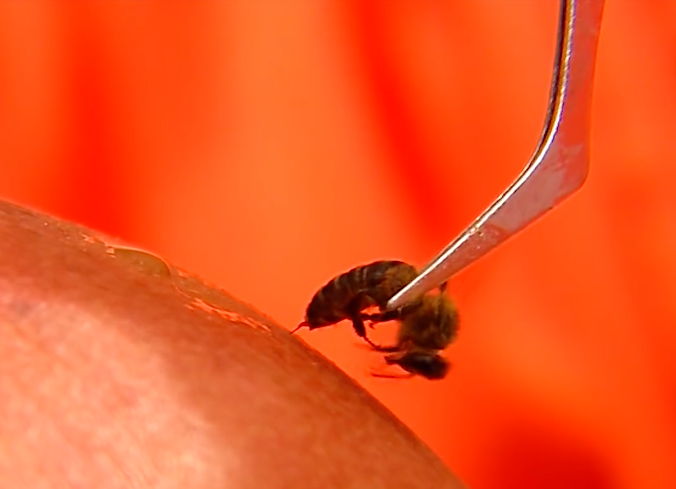 Apitherapy Apitherapy is using the products of a honey bee colony for therapeutic purposes. Humans have been doing this for thousands of years, and some apitherapy, like the use of honey to heal wounds and burns and soothe sore throats, has been scientifically proven effective. Also, the use of bee venom in immunotherapy to protect people allergic to bee stings from having an anaphylactic reaction when stung is a medically sound therapy and invaluable to bee sting allergic beekeepers. Beeswax is also used in many protective skin products like lip balm and lotion. Benefits? Other components of a honey bee hive that have been used to prevent or treat ailments do not have many peer-reviewed clinical studies to support their claims. Though many people anecdotally report a wide variety of health benefits from the ingestion or topical use of pollen, propolis, bee bread, and royal jelly. Caution should be exercised in use of these products, particularly in those people with pollen or bee venom/sting allergies. Controversial The most controversial form of apitherapy is bee sting therapy or bee venom therapy used not in the context of bee allergy immunotherapy. Bee sting therapy has been reported to treat a variety of diseases including arthritis, Lyme disease, multiple sclerosis, lupus, Parkinson’s Disease, and possibly some forms of cancer, but reliable scientific backing of these claims is sparse. In fact, bee sting therapy has been shown to actually cause autoimmune disease symptoms in some individuals. Because not all of the components of bee venom are well studied or even known, and because each bee’s venom sac contains a slightly different amount and mixture of these components, there are serious risks to bee sting therapy. These risks include, but are not limited to, organ failure and death. Bee sting apitherapy should not be attempted lightly, by anyone who is not a trained professional, without access to an Epipen, or without immediate access to proper medical intervention should a severe reaction occur. More Information: https://www.bbc.com/news/health-43513817
0 Comments
Anaphylaxis
No matter what you read on the internet, the simple truth is bee stings are dangerous. Even if you are not allergic, even if you have been stung many times before, even if you have gentle bees, every sting is an opportunity for an anaphylactic reaction. Again, even if you are not allergic to bee stings, you can spontaneously develop an allergy and have a systemic overreaction by your body that can cause fever, vomiting, diarrhea, dizziness, headache, convulsions, throat swelling, trouble breathing, loss of consciousness, shock, and in some cases, death. While multiple stings at the same time are more likely to cause a severe reaction, these serious symptoms can be caused by a single sting. ALL BEEKEEPERS should carry epinephrine auto injectors (i.e. Epipens) with them when working their hives, especially hives that are remote or when doing inspections alone. Also, as a beekeeper, you will get stung. There is no way to not get stung, only to minimize the amount and severity of the stings. That being said, even if you are or become allergic to bees, with proper immunotherapy and precautions, you can still continue beekeeping (I am a bee sting allergic beekeeper). Benadryl Most honey bee stings cause a local reaction at the sting site. This reaction typically includes: pain, swelling, redness, heat, itchiness, and tenderness that can last a few hours to a few days based on the individual and any topical or systemic treatment applied or taken. Topical treatments include ice, meat tenderizer, antihistamine (i.e. Benadryl) spray, cream, or ointment, and steroid (i.e. cortisone) spray, cream, or ointment. Some people also experience a more moderate reaction with hives that appear on other parts of the body and/or more generalized swelling of the entire area (like the entire hand for example) that worsens over time. Sometimes these more moderate symptoms can be controlled with oral antihistamines (i.e. Benadryl), though oral steroids like Prednisone are sometimes needed. Any reaction that is more than local inflammation at the site of the sting is cause to see a doctor. Caustic What is a stinger? What happens when a honey bee stings you? Only female bees have stingers because they are a modified ovipositor. The stingers of the worker bees are barbed and have two parts which allows them to work their way deeper into the flesh. The stingers are attached to venom sacks which continue to pump venom into the body of the victim minutes after it has pulled away from the bee itself, eviscerating and killing the bee in the process. Not unlike snake venom, honey bee venom is a witch’s brew of peptides and other substances meant to injure the thing that is stung. The main component of bee venom is a peptide called Melittin which causes pain and cell death. More Information: https://www.beeawareallergy.com/resources/beekeepers/high-risk-allergy/ 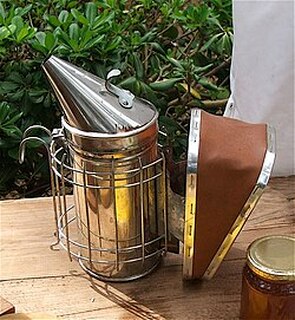 Acceptable There are many specialized pieces of equipment like frame holders to keep frames off the ground when inspecting your hives, and fume boards to force bees out of honey supers you want to remove and harvest. Some beekeepers choose instead to brush bees off their frames with a bee brush, while others feel this tool can injure the bees too easily. There are also the green plastic drone boards we talked about in the section on Varroa control that are also sometimes used be queen breeders to help saturate an area with drones carrying specific genetic traits. Before buying any piece of beekeeping equipment, thoroughly research what it is for and if you truly need it for your apiary. Borderline Other pieces of equipment have a time and a place, but are often not necessary. For example, some beekeepers use a metal or plastic grate called a queen excluder to keep their queen down in the brood chamber and out of the honey supers while others do not. Most beekeepers use a block of wood with slits cut into it, an entrance reducer, in the entrance of smaller or weak hives to prevent pests and robbing, but anything partially blocking the entrance (even grass) will do in a pinch. There are also special robbing screens that go over the entrance of the hive which some beekeepers use during a nectar dearth to prevent robbing. There are both pros and cons of wearing gloves and the type of gloves you choose to wear. Thick leather gloves may prevent stings, but make you clumsy and prone to crushing bees, while nitrile gloves or bare hands are easier to keep clean and maintain dexterity, but stings on your hands can lead to swollen fingers and painful knuckles. Compulsory Three required pieces of equipment for a new beekeeper are a smoker, a veil, and a hive tool. No matter what you see on YouTube, you should always at least wear a veil when working your bees. Getting stung in the face is no laughing matter and bees are drawn to the dark circles that make up a face as well as the CO2 you expel from your nose and mouth. Personally, I recommend beeks wear a full bee suit until they are comfortable working with bees (an early sting may increase your anxiety around bees and they can sense it). A new beek should also always light a smoker when working their bees even if the bees are calm and its use turns out smoking them is not necessary, as lighting a smoker when the bees are already agitated guarantees you will have trouble or it will go out. Hopefully the need for a hive tool to pry the lid off the hive and the boxes and frames apart is self-explanatory. More Information: https://www.youtube.com/watch?v=HaIidPJMJus  American Foulbrood rope test (Vita Bee Health) American Foulbrood rope test (Vita Bee Health) AFB American Foulbrood or AFB is a serious, highly contagious, and fatal bacterial disease in honey bees. It does not affect humans. The bacteria, Paenibacillus larvae, is fed to the bee brood as a spore from contaminated honey and then turns vegetative (reproductive) in the gut of the bee larva. This disease effects the bee brood typically after it has been capped, and instead of developing into a pupa and eventually an adult under the wax cap, the larva turns into a mass of bacterial goo containing millions to billions of spores. Less than 10 spores are needed to cause infection in a new larva. Burn Because this disease is so serious and contagious, infected hives must be quarantined and no equipment shared with any other hives. Though able to be controlled with antibiotics, the recommended treatment for a small operation is closing up the affected hive at night, digging a hole, placing the whole hive in the hole, burning it, and then burying the ashes. Some states REQUIRE you to do this. It may seem extreme, but the spores of AFB remain infectious for more than 80 years and are not destroyed through any common sterilization techniques. AFB is the main reason new beekeepers should not purchase old equipment, especially frames, from sources such as Craig’s List. Caramel Signs of AFB include a spotty brood pattern, caramel colored brood, sunken wax cappings often with holes in them, near black scales in brood cells that are impossible to remove, snotty/ropey larval goo, a foul or rotting smell, and a structure called a pupal tongue in brood cells (a thin, dark, pointy structure crossing the cell). While some of these signs can be seen with other brood diseases, the hard, black scales, larval goo ropes of at least 3.5cm, and pupal tongues are only seen with AFB. There are three tests for AFB: 1) Commercial Kit (similar to a COVID or pregnancy test), 2) Match Stick/Rope Test, 3) Holst Milk Test. More Information: https://www.youtube.com/watch?v=caliX8JZJ2s  Assembly The standard Langstroth beehive is a wooden structure with several key parts. The first part is the bottom board which can be either solid wood or screened, a wooden frame with a screen in the middle to allow ventilation and a form of cultural mite control. The next part of the hive is one or more boxes filled with frames. Then comes the inner cover, a mostly flat piece of wood with a vent hole in the center. Finally, there is a telescoping outer cover that fits over the inner cover and a little bit of the top box to keep out rain and snow. The picture on the left also shows a hive stand which helps to raise a hive off the ground, but isn't a critical part of the hive assembly, and a queen excluder which goes between the brood box and the honey supers, but also isn't required. Boxes There are two lengths of boxes and three different heights of boxes. The two different lengths of boxes are 8-frame and 10-frame, being long enough to fit 8 frames or 10 frames respectively. The three different heights of boxes are deep, medium, and shallow. Deep boxes are typically used for the bee brood, mediums are sometimes used for bee brood, but more often for honey, and shallow boxes are pretty much exclusively used for honey. Because they are mainly used for honey storage, medium and shallow boxes are often referred to as honey supers, while deep boxes are also sometimes called brood boxes. Correct Frames are all the same length (the standard width of the boxes) and three different heights to fit the height of the box. Depending on the height of the frame (and which box they fit), frames are either deep, medium, or shallow frames. While a medium or shallow frame will fit in a deep box, it will not be as high as the box and will leave a gap between the bottom of the frame and the bottom board or the tops of the frames of the box beneath it. Bees will then spend a tremendous amount of energy adding comb to the bottom of the too-short frame to fill the gap, so generally a beekeeper wants to put the correct size frames in the correct boxes. More Information: https://www.uaex.uada.edu/farm-ranch/special-programs/beekeeping/uabeeblog/woodenware-guide.aspx Alternative A Warre hive is a vertical hive like the Langstroth hive with multiple boxes that may be heavy needing to be stacked. Unlike with the Langstroth hive where boxes are removed from the top of the hive stack, with the Warre, boxes are removed from the bottom of the stack. The believed benefits of a Warre hive are that it is “closer to nature” and requires less maintenance, but they only require less maintenance because they have much lower honey yields than a Langstroth hive. Normal maintenance for health, space, and disease are still required. It may be more difficult to find equipment and mentorship for a Warre hive and to test and treat the colony for diseases such as Varroa mite. Bench Mark I strongly recommend starting out with a Langstroth hive as a new beekeeper. Langstroth hive components are the easiest to find and often the most cost efficient. Also, most beekeeping courses, information, books, and internet videos are based on the Langstroth hive design. The main disadvantage of a Langstroth hive is that it can become quite tall and that the heavy boxes can be hard to lift and stack. This can be mitigated by splitting your hive in the spring and removing honey supers in a timely fashion. Climate The main advantage of a Kenyan Top Bar hive is that there is only one box and the colony grows horizontally so the beekeeper will not have to lift boxes off the stack. However, the one long box is quite bulky and heavy if it needs to be moved. Unfortunately, these hives are really meant for a more tropical climate, swarm frequently because the bees run out of space, and generally overwinter poorly because bees in a cluster prefer to move up instead of side to side to reach honey stores. They also either require special frames or are foundationless with very delicate comb that is difficult to handle or test for diseases like Varroa mites. Some people who make beeswax products prefer these hives because the bees need to make a lot of wax. More Information: https://www.honeybeesuite.com/in-praise-of-the-langstroth-hive/  Ancient Beekeeping really started in ancient times with honey hunting and humans harvesting the honey from hives in tree cavities. Traditional honey bee hives kept by the first beekeepers were either conical skeps made of straw or wicker plus mud or wax or cylinders of clay. The problem with these hives is that you have to destroy them to harvest the honey because the comb is fixed (not movable) inside the hive. Skeps are now illegal in some places because they foster poor management and promote disease. Bar The three most common modern beehive designs are the Langstroth hive, the Warre hive, and the Kenyan Top Bar hive. Of these, the Langstroth hive (invented by Rev. Lorenzo Lorraine Langstroth) is by far the most common. One advantage of all of these hives is removable frames that help a beekeeper test for diseases such as Varroa mites and harvest honey without destroying the colony. Langstroth hives and Warre hives are vertical hives, but in Langstroth hives the honey supers go on top of the hive with the brood on the bottom, whereas in a Warre hive, the brood is on the top and the honey is on the bottom. Top Bar hives are horizontal hives with brood in the middle and honey on the edges. Curve There are probably hundreds of different hive designs out there, some designed for aesthetics (garden hives) and some for specific purposes like queen breeding (queen hotels). Still others are meant to simulate the natural habitat of honey bees (log hives). While others try to streamline aspects of beekeeping such as honey harvesting (Flow Hive). Starting out with a more common beehive design will probably help you overcome the steep learning curve in beekeeping and make it a more enjoyable experience. More Information: https://www.smithsonianmag.com/arts-culture/the-secret-to-the-modern-beehive-is-a-one-centimeter-air-gap-4427011/ 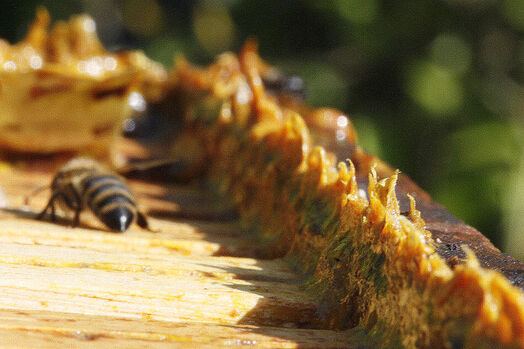 Antimicrobial Propolis is a sticky substance made from the resin of certain trees. It is found inside honey bee hives coating the walls and sealing gaps. It not only helps to make the hive waterproof and airtight, but also is antimicrobial, acting as part of the honey bee super organism immune system. Some people take propolis orally (usually in a capsule or tincture) in the hopes that it will boost their immune system. Unfortunately, there is not much hard science to support this practice. Better Studies have shown that honey bee colonies that collect and use more propolis in their hives have lower incidence and better recovery from diseases like American Foulbrood (AFB), chalkbrood, and Nosema. Unfortunately, because it is sticky and makes it hard to inspect hives, beekeepers have been actively breeding out bee strains who collect and use lots of propolis. This, along with Varroa mites, may be one reason for the current high rate of colony loss. Cottonwood The trees that honey bees collect propolis from most often in Michigan are poplars and cottonwood trees. If bees do not have access to these trees, they may collect other sticky substances such as asphalt. Bees who collect propolis will only forage for propolis and never for pollen, water, or nectar. The resin is stored in the forager bee’s pollen basket, but when she returns to the hive, she will require another bee’s help to bite away the collected resin. More Information: https://www.youtube.com/watch?v=Xsj8mB4KKZs 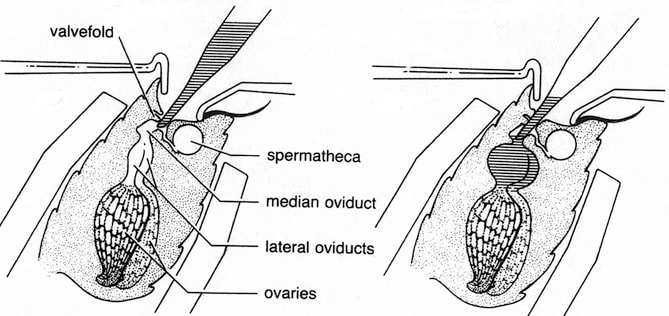 Artificial Insemination Diagram Honey Bee, Credit J. Harbo USDA Artificial Insemination Diagram Honey Bee, Credit J. Harbo USDA Assortment In the last post we discussed the different subspecies of Apis mellifera, the Western honey bee, the species of honey bee kept by beekeepers in the United States. From these subspecies, people have bred certain strains or stocks of bees. This selective breeding is usually done to preserve certain desirable traits, usually disease or mite resistance. The definitions of strains, stock, lines, and breeds of bees is a little murky and sometimes purebred subspecies of A. mellifera are also referred to as strains, stocks, lines, or breeds. Buckfast Some common honey bee stocks include: Buckfast, Saskatraz, Purdue Ankle-Biter (PAB), Varroa Sensitive Hygienic (VSH), feral chewers, and “survivor stock.” The Buckfast bee line is a subspecies of A. mellifera (A. m. buckfast) and was developed by a monk in England to fight the devastation wrought on English bees in the early 1900s by the tracheal mite. These are a combination of Italian bees and German bees. Saskatraz bees are from a breeding program in Saskatchewan, Canada whose primary goal was increased honey production (anecdotal reports say they are also resistant to Varroa mites). All the rest of the mentioned strains have been bred for either general disease (VSH) or Varroa mite resistance. “Survivor stock” are from overwintered colonies who survived Varroa mites with only rigorous IPM mite management and no chemical treatments. PABs and feral chewers are known for their increased grooming habits which include chewing the legs off of the adult mites and killing them. Control It is difficult to selectively breed bees because the queens mate away from the hive with 10-20 different drones from multiple colonies that are not their own. This maintains the genetic diversity which is normally better for keeping a colony healthy and prevents inbreeding. Unfortunately, this also means that most beekeepers have no control over the genetics their queens return with after a mating flight. Selective breeding programs either artificially inseminate the queens with sperm from drones with the desired genetic trait, or supersaturate the miles surrounding the queen’s hive with drones with the desired genetic trait. More Information: https://honeybeehealthcoalition.org/wp-content/uploads/2021/06/Commercial_Beekeeping_062121.pdf (page 3) 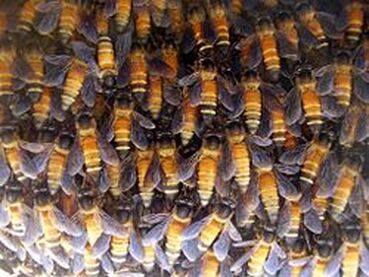 Giant Honey Bees Giant Honey Bees Apis There are between 7 and 11 different species of honey bees. For example, Apis cerana, the Eastern or Asian honey bee is the original host for the Varroa mite, but is not found in North America. Apis dorsata, the giant honey bee, is also only found in South and Southeast Asia. Apis koschevnikovi inhabits Malaysian and Indonesian Borneo. Again, there are no native honey bees in North America, but the colonists brought over Apis mellifera, Western honey bees, and they have been present in North America ever since. Breeds Within the species Apis mellifera, there are 26 recognized subspecies. The most widely known subspecies is Apis mellifera scutellata, better known as the “Africanized” honey bee. Other common European subspecies of Apis mellifera include: Apis mellifera ligustica (Italian honey bee), A. mellifera carnica (Carniolan honey bee), A. m. mellifera (German black bee), A. m. caucasia (Caucasian honey bee), and A. m. artemisia (Russian honey bee). Characteristics Many bees in North America have become hybrids of these subspecies, so bees not obtained from a certified breeder will probably have mixed genetics from more than one of these subspecies. Generally, overwintered MI bees are considered “Michigan mutts.” However, some beekeepers choose to start with or maintain more pure lines of bees or hybrid bees that are a cross between certain subspecies based on the traits of those subspecies. For example, many people prefer Italians because of their calm temperament and increased honey production. Others prefer Russian bees for their reported Varroa mite resistance. Most beekeepers in the U.S. try to avoid keeping bees with Apis mellifera scutellata genetics because they tend to be super defensive bordering on aggressive, sting more frequently, swarm more often, and produce little honey. However, they are routinely kept by African beekeepers. More Information: https://bee-health.extension.org/subspecies-the-place-of-honey-bees-in-the-world/ |
AuthorJen Haeger is a new master beekeeper and board member of A2B2. Archives
August 2022
Categories
All
|

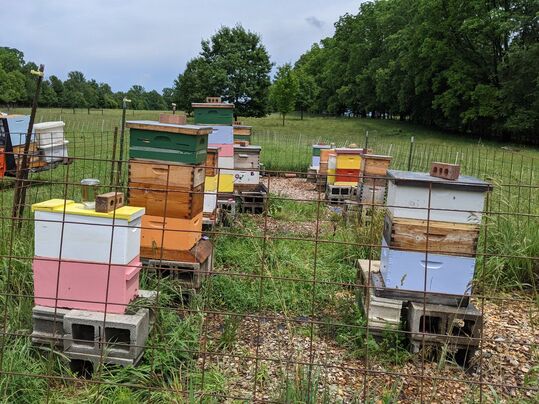
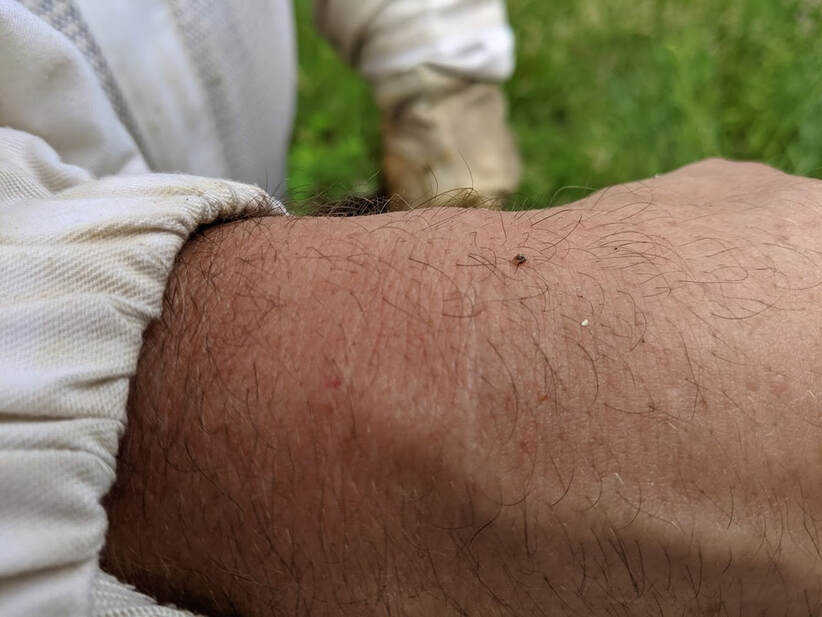
 RSS Feed
RSS Feed
